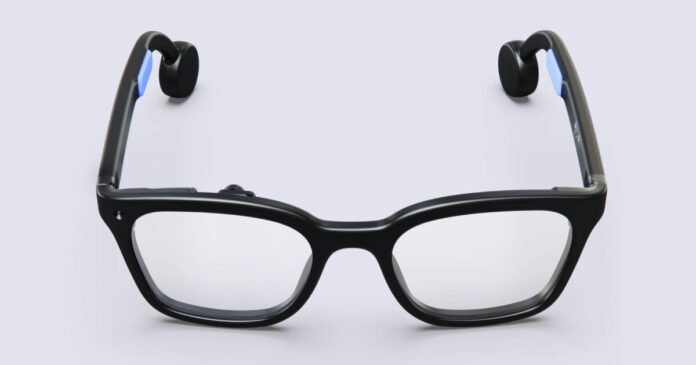Contents
Revolutionary Open-Source Glasses: Halo Arrives with AI Agent for Enhanced User Experience
Halo, the innovative open-source glasses developed by Brilliant Labs, has been unveiled, featuring a private AI agent that can see, hear, and speak, revolutionizing the way users interact with their surroundings. With its advanced technology and open-source design, Halo is set to change the face of wearable technology, providing users with a hands-free device that can process visual and audio content in real-time.
The launch of Halo marks a significant milestone in the development of wearable technology, as it combines the power of artificial intelligence with the convenience of open-source design. The glasses are equipped with a color display, low-power optical sensor, two microphones with sound activity detection, a low-power AI processor, and two bone conduction speakers, allowing users to hear without blocking their ears. At the center of the Halo system is Noa, the private AI assistant that works like a real human, having live conversations with the wearer and providing real-time assistance.
Key Features of Halo Open-Source Glasses
The Halo glasses are designed to be a hands-free device, allowing users to get information or process visual and audio content from their surroundings without the need for a phone or computer. The private AI agent, Noa, has memory support, which means it can remember what the wearer saw, heard, or said, making it a highly personalized and predictive assistant. Some of the key features of Halo include:
* A color display that shows information and app interfaces directly in the user’s view
* A low-power optical sensor used for AI processing
* Two microphones with sound activity detection
* A low-power AI processor
* Two bone conduction speakers that allow users to hear without blocking their ears
* A private AI agent, Noa, that can see, hear, and speak
* Memory support that allows Noa to remember what the wearer saw, heard, or said
Open-Source Design and Community-Driven Improvements
The open-source design of Halo allows developers and researchers to view, change, or share the software and hardware designs, making it a highly collaborative and community-driven project. The design files and source code are available online, enabling others to make custom versions of the Halo system and contribute to its development. This approach supports learning, testing, and community-driven improvements, ensuring that Halo remains at the forefront of wearable technology.
Creating and Developing Custom Apps with Halo
Halo also features a function called Vibe Mode, which allows users to turn ideas into apps. By typing their idea into a terminal called Vibe Mode, Noa reads the idea and starts creating it, generating a version of the application that can be edited or adjusted by the user. This feature makes it easy for users to create custom apps that meet their specific needs, without requiring extensive coding knowledge.
Real-Time Functions and Display System
The Halo glasses act as a display system, meaning that information created or shared by Noa directly appears in the user’s view. The user can see results, images, or app interfaces without using a phone or computer, making it a highly convenient and hands-free device. The open-source glasses support building custom applications, so developers can write code to add new tools or features directly into Halo.
Availability and Pre-Order Information
The Halo pool to pre-order the open-source glasses has opened, with shipping starting in late 2025. The device is designed to fit most people, but not all, with an IPD (inter-pupillary distance) range of 58–72 mm. The team advises wearers to use the Eye Measure app to check whether the device suits their eyes. The device weighs slightly over 40 grams and can last for a full day on a single charge under regular conditions.
In conclusion, the introduction of Halo open-source glasses with a private AI agent marks a significant advancement in wearable technology. With its advanced features, open-source design, and community-driven approach, Halo is set to revolutionize the way users interact with their surroundings, providing a highly personalized and predictive assistant that can see, hear, and speak.
Conclusion:
The launch of Halo open-source glasses is a groundbreaking moment in the development of wearable technology, offering users a hands-free device that can process visual and audio content in real-time. With its private AI agent, Noa, and open-source design, Halo is poised to change the face of wearable technology, providing a highly personalized and predictive assistant that can enhance the user experience.
Keywords:
* Open-source glasses
* AI agent
* Wearable technology
* Brilliant Labs
* Private AI assistant
* Noa
* Vibe Mode
* Custom apps
* Real-time functions
* Display system
* Community-driven improvements
Hashtags:
* #OpenSourceGlasses
* #AIagent
* #WearableTechnology
* #BrilliantLabs
* #PrivateAIassistant
* #Noa
* #VibeMode
* #CustomApps
* #RealTimeFunctions
* #DisplaySystem
* #CommunityDrivenImprovements
Source link
